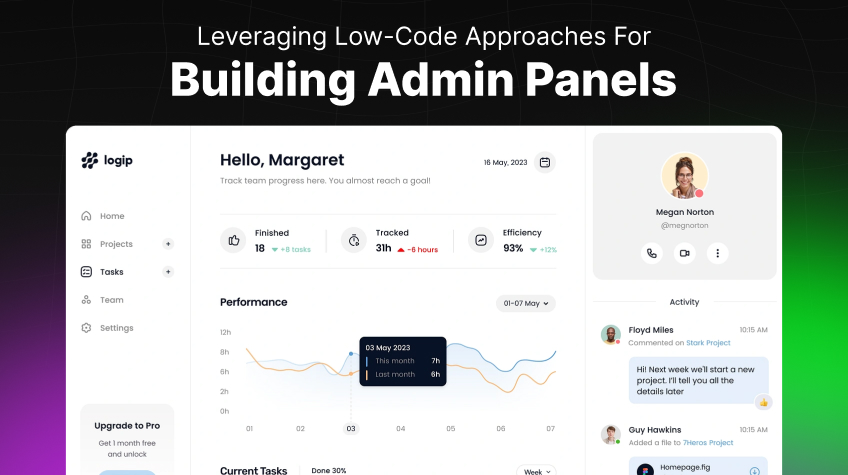
Businesses striving to stay competitive are increasingly turning to digital transformation and business efficiency strategies to streamline operations. One essential tool in this process is the node admin framework, which facilitates seamless oversight of operations, data management and user interactions. Traditionally, building these panels required extensive coding knowledge and significant development time. However, the rise of low-code solutions has revolutionized this process, making it more accessible, cost-effective and time-efficient.
What is Low-Code Development?
Low-code development is an approach that minimizes the need for manual coding by leveraging pre-built components, drag-and-drop functionality and visual interfaces. Low-code platforms enable rapid application development and facilitate business automation, allowing both developers and non-technical users to create powerful applications with minimal programming effort. It enables both developers and non-technical users to create powerful applications with minimal programming effort. Low-code platforms accelerate development cycles, reduce maintenance costs and improve collaboration between business stakeholders and IT teams.
Why Use Low-Code for Admin Panel Development?
Building admin panels using low-code solutions offers several advantages that can significantly enhance productivity and operational efficiency. Some of the key benefits include:
- Faster Development Time: Traditional development methods require writing code from scratch, which can take weeks or even months. Low-code platforms provide pre-built UI components, authentication modules and integrations that drastically reduce development time.
- Cost Efficiency: By reducing the need for specialized developers, businesses can save on hiring costs and redirect resources toward other critical operations. Low code tools also lower maintenance and upgrade expenses.
- Ease of Use: Many low-code platforms offer intuitive drag-and-drop interfaces, making it easier for business users to contribute to the development process without needing extensive technical skills.
- Scalability and Flexibility: Low-code admin panels can scale effortlessly to accommodate growing business needs. Whether handling large datasets, integrating with various APIs or managing user roles, these platforms provide flexible solutions.
- Security and Compliance: Modern low-code platforms incorporate robust security features, such as role-based access control (RBAC), data encryption and compliance with industry standards like General Data Protection Regulation and Health Insurance Portability and Accountability Act.
Key Features of Low-Code Admin Panels
When choosing a low-code solution for building admin panels, it is important to consider the following key features:
- User Management: Ability to create, edit and delete users, assign roles and manage permissions.
- Data Visualization: Dashboards with charts, graphs and tables to track performance metrics.
- API Integrations: Seamless connection with third-party services such as CRM, ERP and payment gateways.
- Automated Workflows: Streamlined automation for repetitive tasks such as report generation and notifications.
- Customization Options: Flexibility to tailor the UI/UX based on business-specific requirements.
- Responsive Design: Compatibility with various devices and screen sizes for a better user experience.
Popular Low-Code Platforms for Admin Panel Development
Several low-code platforms are available to facilitate the development of admin panels. Some of the most popular options include:
1. AdminForth
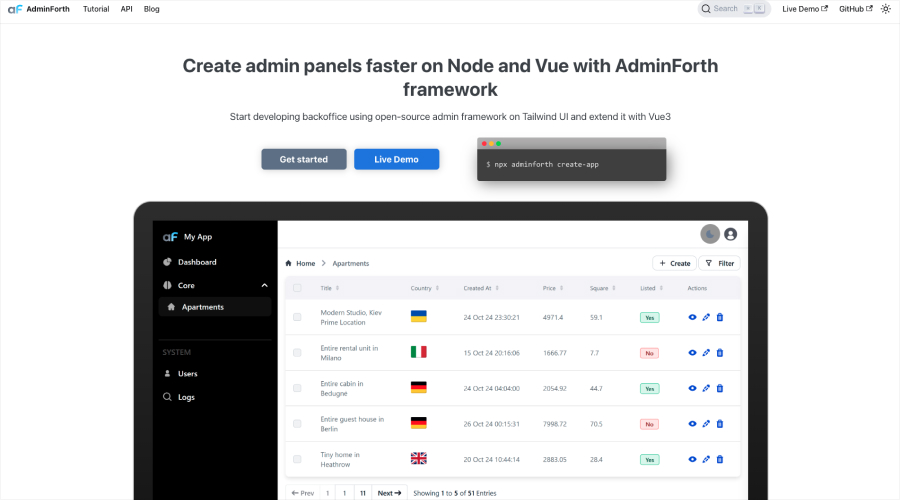
AdminForth is an open-source framework specifically designed to develop admin panels efficiently. While not a fully low-code solution, AdminForth offers a comprehensive toolkit for building scalable and customizable dashboards with minimal coding effort. It offers a rich set of components and a highly customizable environment to meet diverse business needs. With AdminForth, developers can quickly build scalable and feature-rich admin dashboards without extensive coding effort.
The framework provides seamless integrations, responsive layouts and built-in security features, making it an excellent choice for businesses looking to optimize their operations. As an open-source tool, AdminForth can be easily accessed and explored on GitHub, making it an accessible choice for developers worldwide.
2. Retool
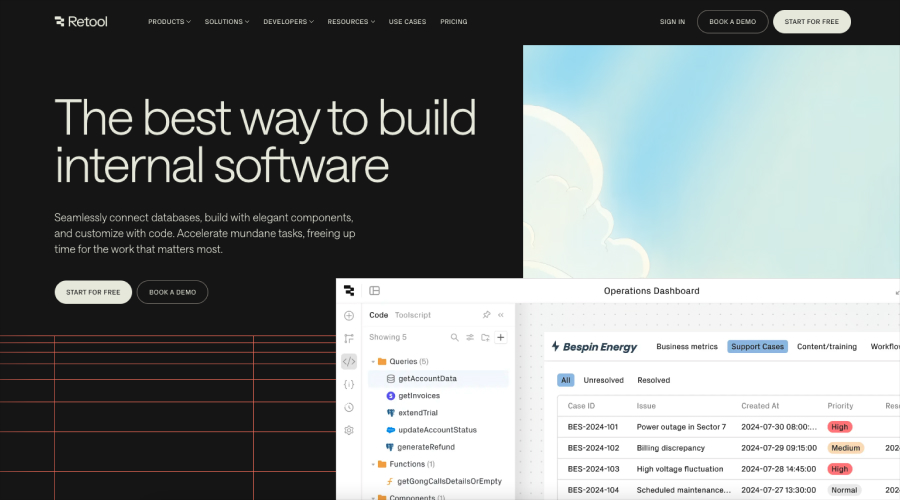
Retool provides a wide range of pre-built components and database connectors that allow users to rapidly assemble custom admin panels. It offers a visual editor that simplifies the development process while enabling complex functionality with minimal code.
3. OutSystems
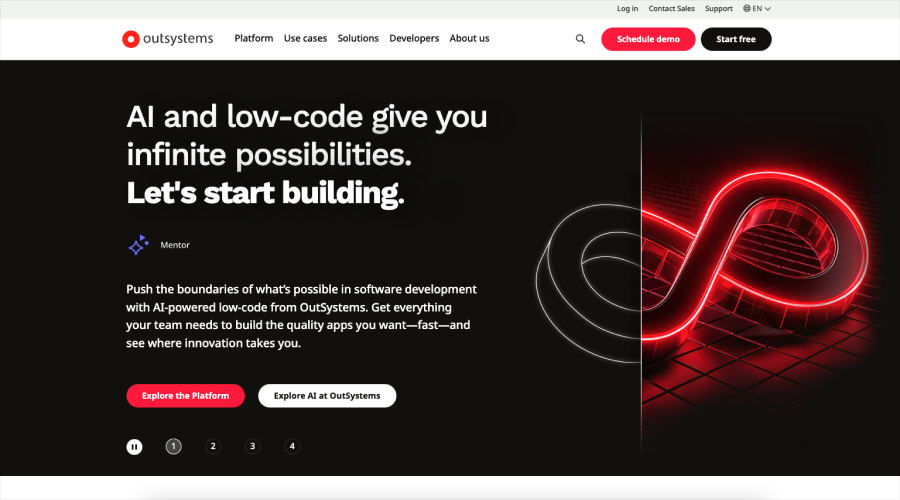
OutSystems is an enterprise-grade low-code platform known for its scalability and robust integrations. It allows users to build applications with complex logic and extensive data processing requirements.
4. Mendix
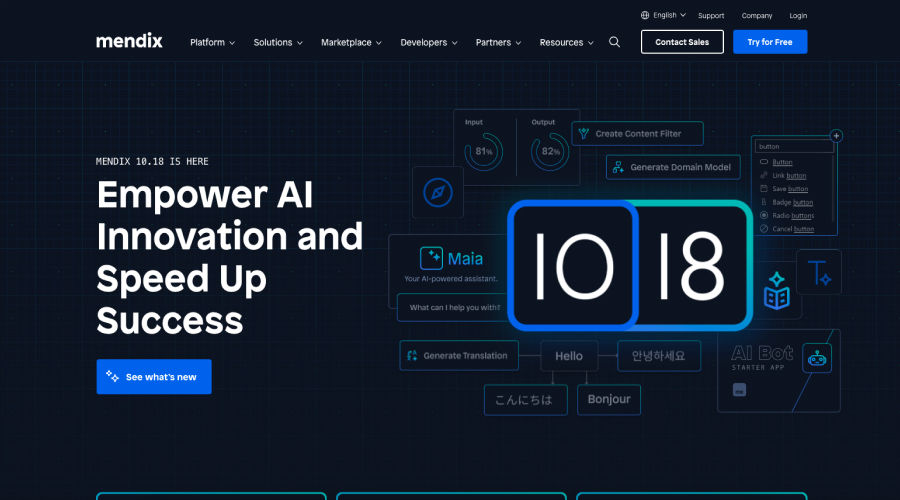
Mendix offers a collaborative low-code environment that empowers both developers and business users to contribute to the development process. It provides extensive integrations and cloud deployment options.
5. Budibase
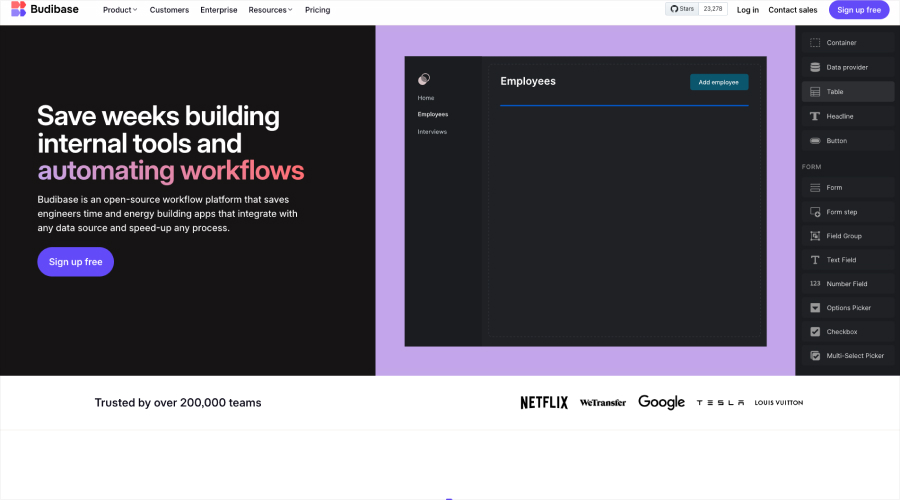
Budibase is another open-source option that provides an easy-to-use interface for creating internal tools and admin dashboards with minimal coding.
How to Build an Admin Panel Using a Low-Code Approach
To successfully build an admin panel using a low-code approach, follow these key steps:
Step 1: Define Requirements
Clearly outline the objectives and functionality required for the admin panel. Identify essential features such as user authentication, data visualization and reporting.
Step 2: Choose the Right Platform
Select a low-code platform that aligns with your business needs and technical capabilities. Consider factors such as scalability, integration options and customization capabilities.
Step 3: Design the User Interface
Utilize the drag-and-drop functionality provided by the low-code platform to design an intuitive and user-friendly interface. Focus on ensuring accessibility and ease of navigation.
Step 4: Configure Data Sources
Connect your admin panel to necessary data sources, such as databases, APIs or cloud storage. Ensure proper data security and validation mechanisms are in place.
Step 5: Implement Business Logic
Use the platform’s visual workflow builder or scripting capabilities to define business logic and automate processes such as notifications, approvals and data processing.
Step 6: Test and Deploy
Conduct thorough testing to identify and address any usability or functionality issues. Once satisfied, deploy the admin panel for real-world use.
Step 7: Monitor and Optimize
Continuously monitor the admin panel’s performance and gather feedback from users to make improvements and optimizations over time.
Future Trends in Low-Code Admin Panel Development
As technology continues to evolve, several trends are shaping the future of low-code admin panel development:
- AI-Powered Automation: Integration of AI-driven insights and automation to enhance decision-making and efficiency.
- Improved Customization Options: More flexible and customizable low-code platforms that allow for deep personalization.
- Enhanced Security Features: Continued focus on data privacy and compliance to meet evolving regulatory requirements.
- Multi-Cloud Deployments: The ability to deploy admin panels across multiple cloud environments for better scalability and redundancy.
Also Read: Low-Code Automation Processes
Conclusion
The low-code approach is transforming how businesses develop admin panels by offering a faster, more cost-effective and user-friendly alternative to traditional coding methods. With platforms like AdminForth, organizations can leverage open-source frameworks to build efficient, scalable and secure admin panels tailored to their unique needs. As low-code solutions continue to evolve, they will play an increasingly vital role in driving digital transformation and operational excellence.
By embracing low-code development, businesses can unlock new opportunities for innovation, collaboration and agility. Start your low-code journey today to stay ahead in an increasingly competitive landscape, ensuring they stay ahead in an increasingly competitive landscape.






